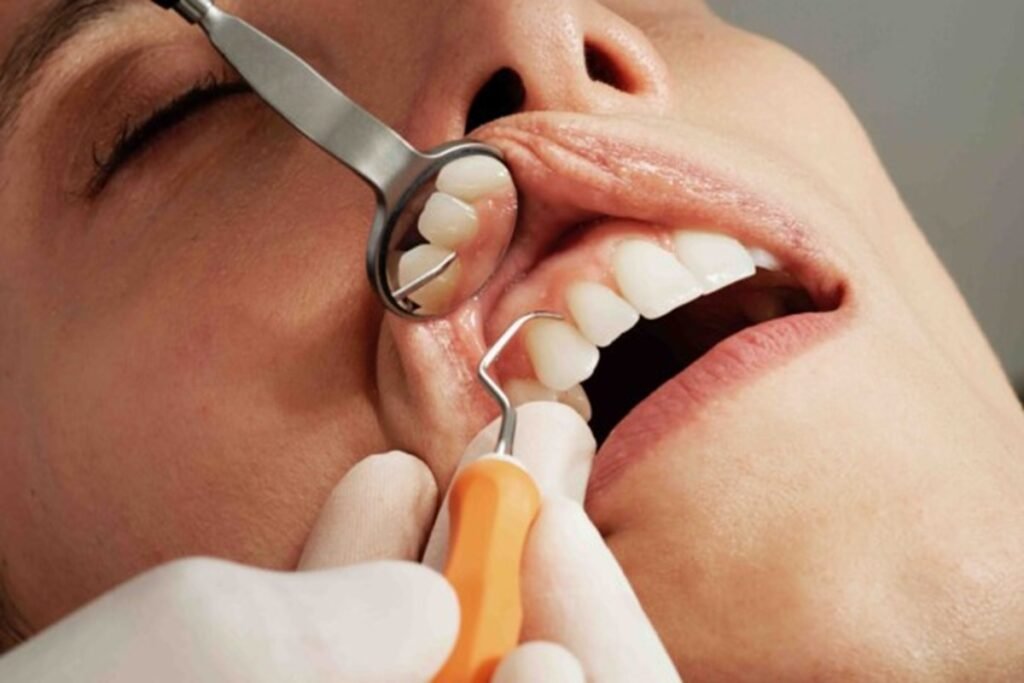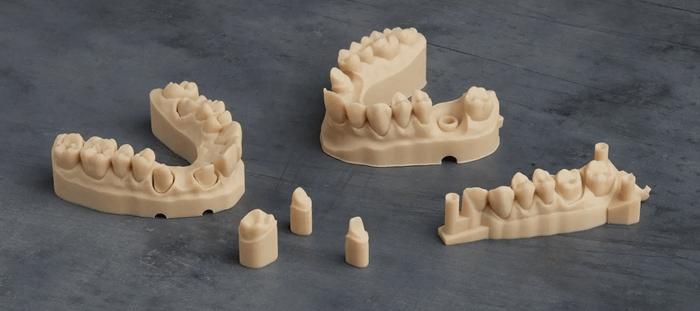
Dental resins are pivotal in modern dentistry, offering versatile solutions for restorative and cosmetic procedures. Understanding the various types of dental resins and their specific applications can help dental professionals select the most appropriate materials for patient care.
Here, we will explore the ten types of dental resins and their applications in modern dentistry:
1. Light-Cured Composite Resins
Light-cured composite resins are the most widely used materials in modern dentistry. These resins cure illumination by a specific wavelength of light, usually provided by a curing light. The mechanism of such curing allows one to control working time, making these resins highly versatile for a range of clinical applications.
Applications
- Direct Restorations: Ideal for cavity filling and repairing chipped or fractured anterior and posterior teeth.
- Cosmetic Procedures: Used for bonding and veneering due to its excellent aesthetic.
- Customized Incremental Placement: The dentist can place the resin in layers to achieve optimal curing and strength for deep restorations.
Advantages:
- The instant hardening minimizes chair time.
- It has excellent shade matching and translucency to give natural restorations.
- Minimal shrinkage during curing improves the durability of the restoration.
2. Self-Curing Composite Resins
Self-curing composites polymerize through a chemical reaction between two parts: a base and a catalyst. They do not require light curing like the other types of resins. They are suitable when there is limited access to the field.
Uses
- Core Build-Ups: Suitable for building a strong foundation for crowns
- Restorations in Difficult Regions: For posteriors or subgingival caries
- Orthodontic Bonding: Used in attaching brackets whenever direct curing beams are not employed.
Benefits
- It is not necessary to have a special curing beam.
- Works under strenuous clinical circumstances.
- Excellent efficacy when curing either in superstructures or sub-gingivally where light transmission is not great.
3. Resin Cement
Resin cements are an important component of modern prosthodontics. They are extremely strong bonding agents that securely hold indirect restorations, such as crowns, bridges, veneers, and the like, against the remaining natural teeth or the abutment of implants.
Usage
- Cementation of Restorations: These cement crowns, inlays, onlays, and bridges are firmly positioned.
- Veneer placement: Its low viscosity will enable veneer placement precisely with minimal alteration to aesthetics.
- Orthodontic Attachments: They are used to attach brackets and other orthodontic appliances.
Advantages:
- More bonding strength compared with traditional cements
- Available in Light-cured, Self-cured, and Dual cured forms
- More resistant to wear and discoloration ensures long-lasting results
4. Microfilled Composite Resins
Microfilled resins have ultra-fine filler particles, providing a smooth, highly polished finish. They are intended for use in areas where aesthetics are the primary consideration.
Applications:
- Anterior Restorations: Suitable for repairing minor defects, chipping, or cracks of anterior front teeth.
- Veneers and Bonding: Cosmetic restorations which necessitate high polish shine
- Small Cavities: Applicable in Class III and Class V restorations.
Advantages
- Provide a highly polishable, lifelike aesthetic finish
- Not stained over time easily
- Offer good wear resistance properties compared to resin without filler
5. Nanofilled Composite Resins
Nanofilled resins incorporate nano-sized filler particles, offering an exceptional balance of strength, durability, and aesthetics. They are ideal for anterior and posterior restorations.
Applications:
- Universal Restorations: Effective for both cosmetic and functional purposes.
- Posterior Load-Bearing Areas: Strong enough to handle chewing forces.
- Repairing Existing Restorations: Their blendable consistency allows for seamless integration.
Advantages:
- Excellent polishability and gloss retention.
- High fracture resistance and strength.
- Less shrinkage during curing.
6. Hybrid Composite Resins
Hybrid resins consist of macro and micro fillers. Thus, they are the best compromise between strength and polishability. They are employed in most dental restorations.
Applications:
- General Restorations: Class I, II, III, IV, and V restorations.
- Anterior and Posterior Use: The aesthetic and mechanical hardness.
- Core Build-Ups: The mechanical hardness is ample enough for a big restoration.
Advantages:
- The wear resistance is superior to that of the microfilmed resins.
- High strength for load-bearing applications.
- Good esthetic results with visible restorations.
7. Flowable Composite Resins
Flowable composites are low-viscosity materials that allow the application of a very thin layer. Thus, they are excellent for small cavities or as liners.
Applications
- Small Cavities: Used in Class III and Class V lesions.
- Liners and Base Layers: These are used under other composite restorations.
- Pediatric Dentistry: Suitable for treatment of smaller teeth or minimal decay.
Advantages
- Easy application to hard-to-reach areas
- Ease of adaptation ensures good seal and minimal voids.
- Excellent wear resistance; hence, long-term use is allowed.
8. Bulk-Fill Composite Resins
Bulk-fill resins are designed to be placed faster and more efficiently; hence, thicker increments are allowed without loss of curing.
Applications:
- Posterior Restorations: Deep cavities require speed and efficiency.
- Base Layers: A good foundation for subsequent layers
- High-Volume Practices: Chair time is minimized, and productivity is gained
Benefits
- Faster pace of placement and curing
- Optimal depth of cure for deeper layers
- Minimal chances of getting air bubbles or voids present
9. 3D Printing Resins

3D printing resins have revolutionized digital dentistry by providing highly accurate, great-quality models, surgical guides, and custom trays. Resins make workflows smoother, increase accuracy in treatments, and open ways to more complex practices in the dental sector.
Applications:
- Diagnostic Models are precise replicas that can be used for treatment planning and better communication with the patient.
- Surgical Guides: Customized guides based on individual cases ensure accuracy in the placement of implants.
- Orthodontic Models: Accurate aligners, retainers, and other orthodontic appliance production is easy.
- Restorative Models: Crowns, bridges, and veneers are accurately replicated using high-quality resin materials.
Aidite presents a better series of 3D printing resins designed to fulfill the requirements of digital dentistry. Some of the products offered by them are as follows:
Dental Model Resin (Yellow):
Aidite’s Dental Model Resin (Yellow) is a high-performance material designed for ultimate reliability and user-friendliness. The resin shows a high hardness value, ensuring the 3D-printed models are scratch-resistant from external influences and, therefore, durable. It has a high glass transition (Tg) temperature that does not deform after polymerization, thereby ensuring stability in the long term. The resin also offers:
- High Molding Accuracy: It ensures fine details are reproduced accurately.
- High-Dimensional Stability: It maintains shape and size throughout printing and post-printing.
- High Detail Resolution: Suitable for complex restorations and orthodontic models.
- Scratches Resistance: Protects against wear and tear during handling.
- Low Viscosity: This improves its usability and minimizes waste material in the printing process.
This resin is applied to produce strong, highly accurate, long-lasting restorative and orthodontic models, which have become a staple in digital dentistry.
Dental Model Resin for Thermoforming
Aidite Model T resin or Thermoforming Dental Resin is specifically designed to print models using thermoforming technology with high precision and performance. The models printed are highly hard and resistant to high temperatures. Thus, it is highly applicable in restorative and orthodontic fields. The following are the features:
- High-Temperature Resistance: The integrity of the resin is preserved even after the thermoforming process.
- High Edge Strength: Sharp and sharp edges make it more robust.
- Good Intrinsic Stability: The resin can provide consistent performance with no deformation.
- Easy Thermoforming Release: It makes it easier and saves time.
With its premium qualities, this resin provides precise, strong, and durable models that meet the requirements of current digital dentistry.
10. Denture Base Resins
Denture-based resins are a basic part of prosthetic dentistry. They provide the strength, biocompatibility, and aesthetics needed to fabricate complete and partial dentures. The resins have been designed to satisfy the needs of patients and clinicians alike with comfort and durability.
Applications:
- Complete Dentures: The material used mainly for full dentures, which are strong and aesthetic.
- Partial Dentures: A solid substructure that completes the structure for a partial restoration
- Repairs and Relines: We reshape and strengthen the currently broken or severely weakened dentures for a renewed fit and functional life.
FAQs
1. What is the difference between light-cured and self-cured composite resins?
Light-cured resins cure in the presence of a particular wavelength of light, permitting controlled working time. Self-cured resins polymerize by chemical reaction and are ideal for use in areas where light curing is impossible.
2. Why are nanofilled composite resins a good option for restorations?
Nanofillers incorporated into resins achieve an outstanding balance of strength, durability, and aesthetics. Due to its very high polishability and gloss retention, coupled with its resistance to fractures, the resin is suitable for anterior and posterior restorations.
3. Why are denture base resins important in prosthetic dentistry?
Denture base resins provide the strength, biocompatibility, and aesthetics necessary for comfortable, strong, complete partial dentures. Aidite’s denture-based resin will achieve high polymerization efficiency with minimal monomer residue to enhance patient outcomes.
4. How do bulk-fill composite resins help reduce chair time?
Bulk-fill resins enable dentists to place thicker increments in one step, which means faster curing. This reduces air bubbles, voids, and chair time while ensuring strong and reliable restorations.
5. What are the benefits of Aidite’s 3D printing and denture base resins?
Aidite’s resins for 3D printing are now available in the dental world, ensuring strength, accuracy, and heat resistance for performing restoratives and orthodontics. The resins of the denture base exhibit durability and biocompatibility with minimal residue, improving denture strength and patient comfort.
Conclusion
The proper type of dental resin must be used to complete a restorative and prosthetic procedure. Aidite offers dentists a full spectrum of dental resin products, offering them reliable, high-quality material suitable for all the applications required for various clinical uses.



